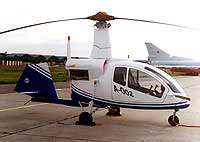
The electronics on the Irkutsk-designed plane

Tests show it can hit naval targets from up to 400 km
 The Russian Air Force unveiled upgraded versions
of its jet fighters at an air display on 6 March, 2001. It invited TV cameras
to record the Sukhois going through their paces and to get a peek inside the high-tech
cockpits that will greet tomorrow's combat pilots.
The Russian Air Force unveiled upgraded versions
of its jet fighters at an air display on 6 March, 2001. It invited TV cameras
to record the Sukhois going through their paces and to get a peek inside the high-tech
cockpits that will greet tomorrow's combat pilots.
Based on the two-seat Su-27UB trainer and originally known as the Su-27PU,
the Sukhoi Su-30 is intended to be a long-range
precision-attack fighter similar in mission to the F-15E Strike Eagle.
Although retaining the air-to-air interceptor duties of the
Su-27, the early Su-30 and Su-30K models are optimized for long-endurance
missions of 10 hours or so. These aircraft are also
fitted with a radiolocation system that allows them to transmit the
positions of up to 10 targets to four other aircraft
simultaneously. This feature makes the Su-30 suitable for use as a
tactical fighter leader designating targets to be attacked by
other aircraft. These variants were later joind by the mutli-role Su-30M
model that adds precision ground attack capability and
the ability to carry a wide range of advanced guided bombs and missiles.
Sukhoi has also actively marketed an export model, the
Su-30MK, that has been purchased by India (Su-30MKI) and China
(Su-30MKK). India has ordered 28 baseline aircraft and
another 12 with canards and vectored thrust nozzles for improved
maneuverability. India plans to add these upgrades to its entire
Su-30 fleet in the future. Indonesia has also reportedly shown great
interest in the Su-30MK, but any acquisition plans have
been postponed indefinitely in light of the nation's recent political and
economic turmoil. In Russian service, the Su-30 has
supplemented and replaced many older MiG-31 and Su-27 intereceptors.
 The electronics on the Irkutsk-designed plane |
 Tests show it can hit naval targets from up to 400 km |
 It will be loaded with high-precision weapons |
 Plant of Irkutsk Aviation Production Association |


Firefighting Jet Be-200
Be-200 was developed from the A-40/Be-42 'Mermaid'. It has a high-mounted swept wing, with engines mounted above the center wing section. A T-tail and pressurized 2-step boat hull with a conventional airliner-style pilot's cabin conclude aircraft's appearance. The hull is divided into separate watertight compartments, keeping it afloat even if two adjacent compartments are flooded. Unlike existing competitors, the Be-200 fuselage is fully watertight.
The retractable tricycle landing gear allows the Be-200 to operate from class B airfields. In amphibian mode it can operate from any water surface deeper than 2m and with a wave height up to 1.2m (sea state 3). Its water taxi speed is up to 50km/h, controlled by the stern water rudder and/or engines thrust variation.
More info Sources: BBC, AS Baikal TV
Copyright © WWW Irkutsk 2001, Photos © BBC, AS Baikal TV